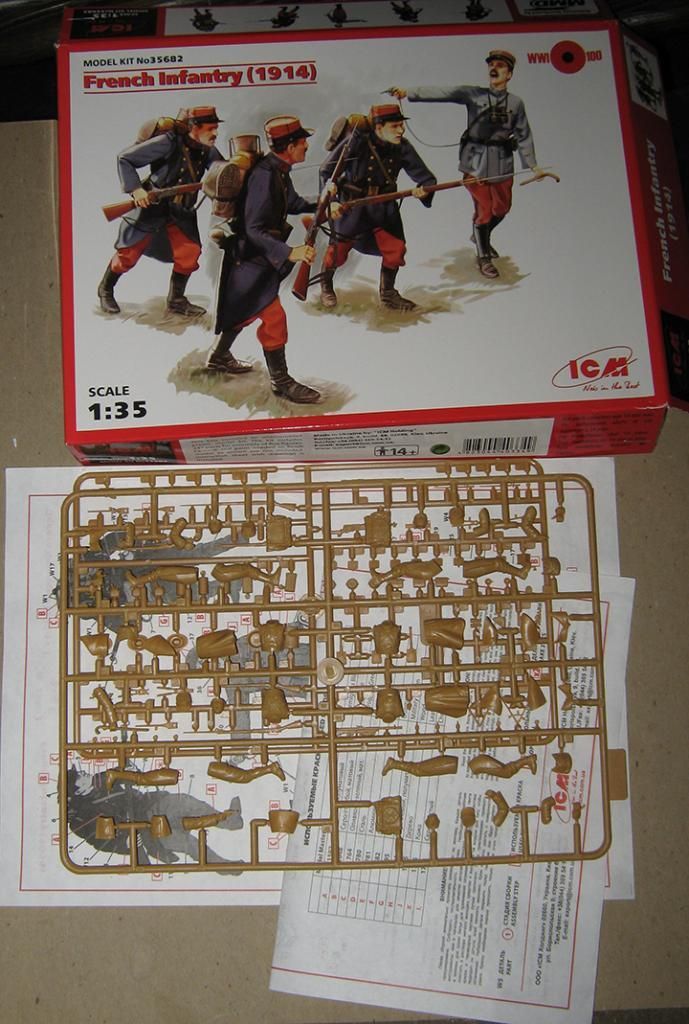
I got the ICM 'French Infantry, 1914' set a year ago. While I certainly wanted to do a figure of a French soldier at the start of the Great War, my intent was that this set would serve, too, as practice for doing a couple of white metal Napoleonic figures I had also bought.
The ICM figures have, however, to be assembled before they can be painted, and that --- well, that is something else again.
The set contains parts for three enlisted men and an officer, all in 'action' poses. I was working on assembling one of the enlisted men when wife had to go to the hospital last year (literally, I set the thing down when she called me), and that one I have been leery even of touching again, and in any case now that I have put two of them together over the last couple of weeks I know most of my work on it (legs and coat skirts) wold have been useless anyway. I was painting as I assembled, in the fond hope things would fit....
I really should know better by now.
I would definitely not recommend this set for the novice or the unwary.
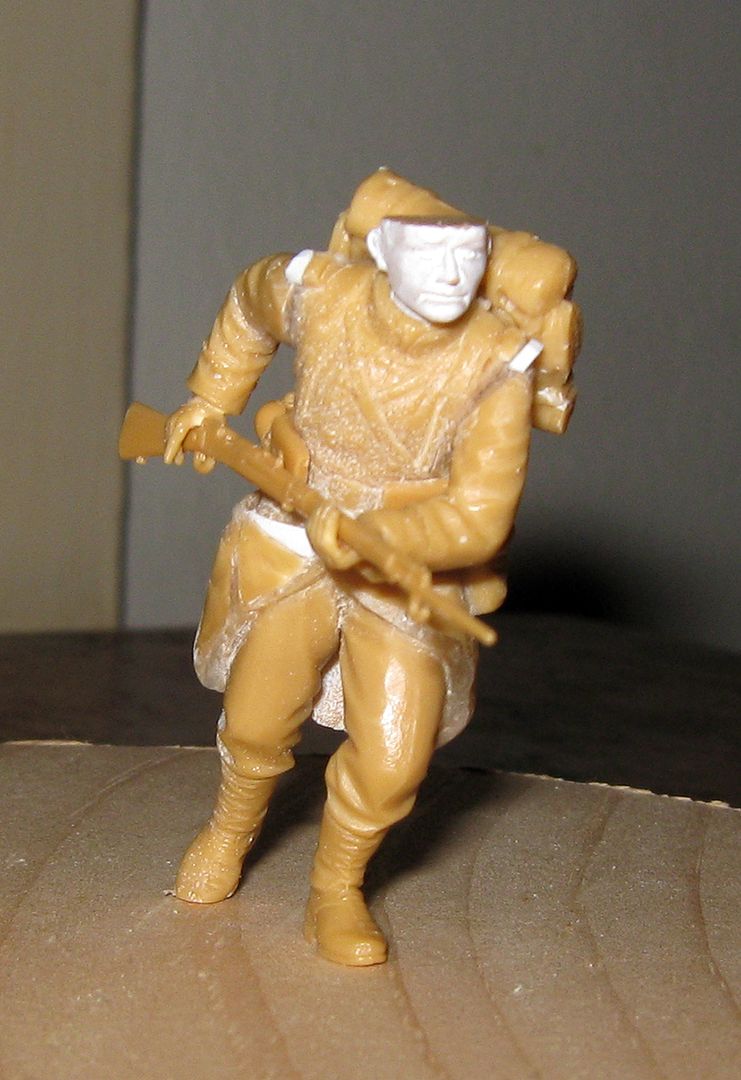
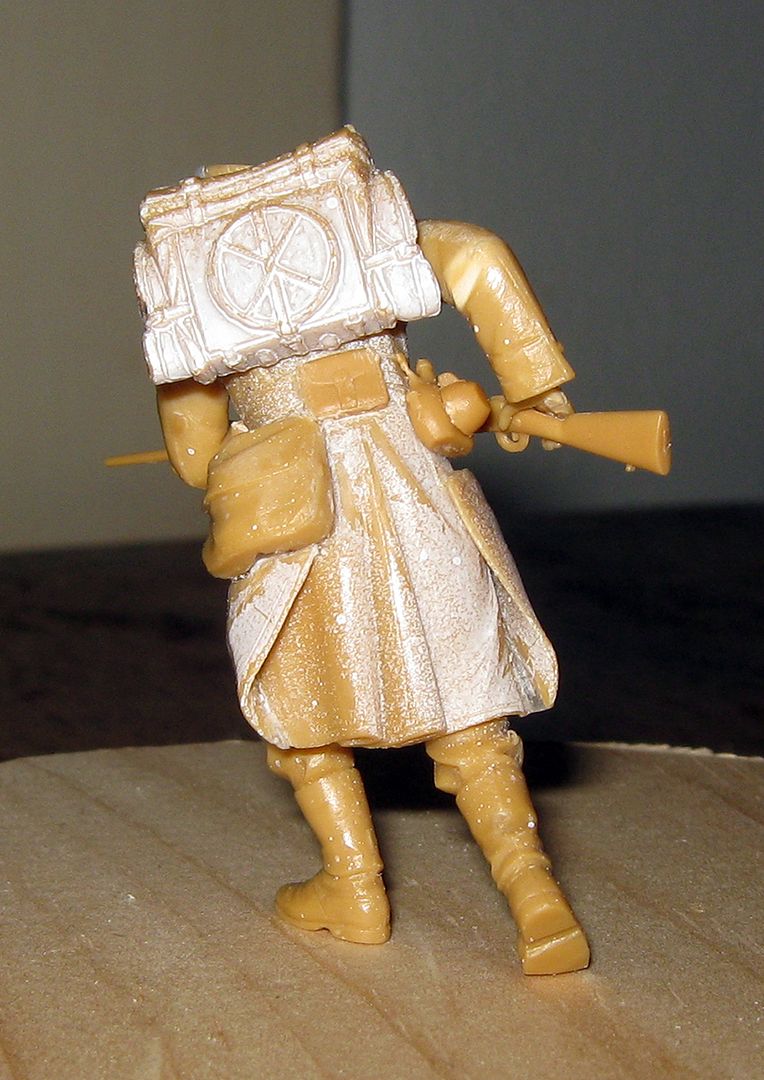
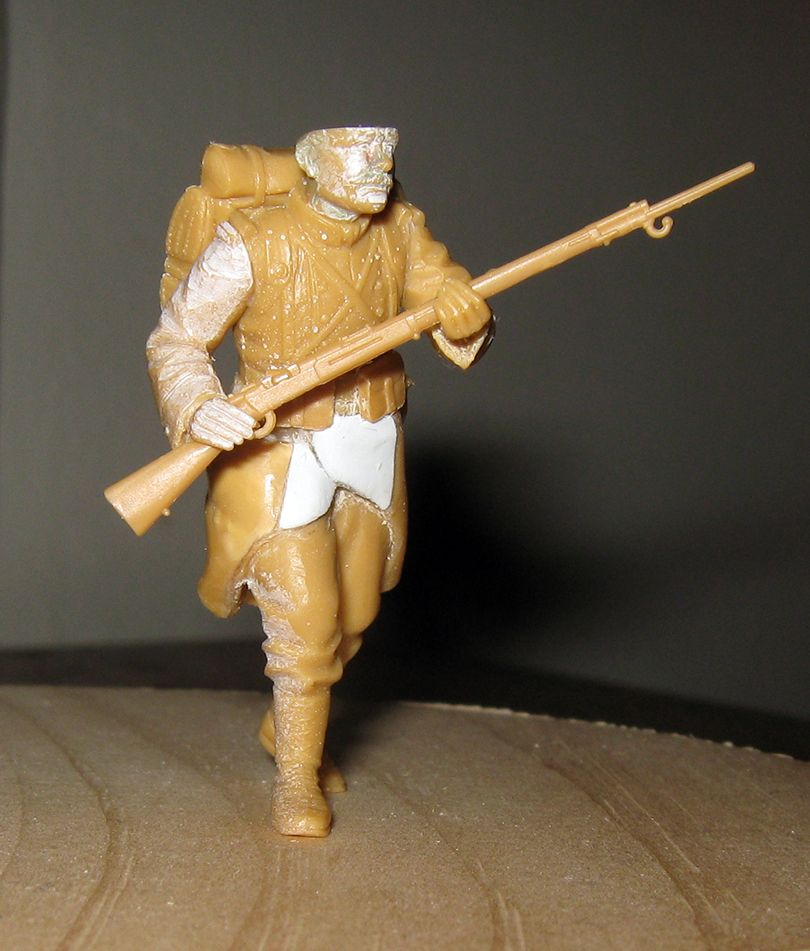
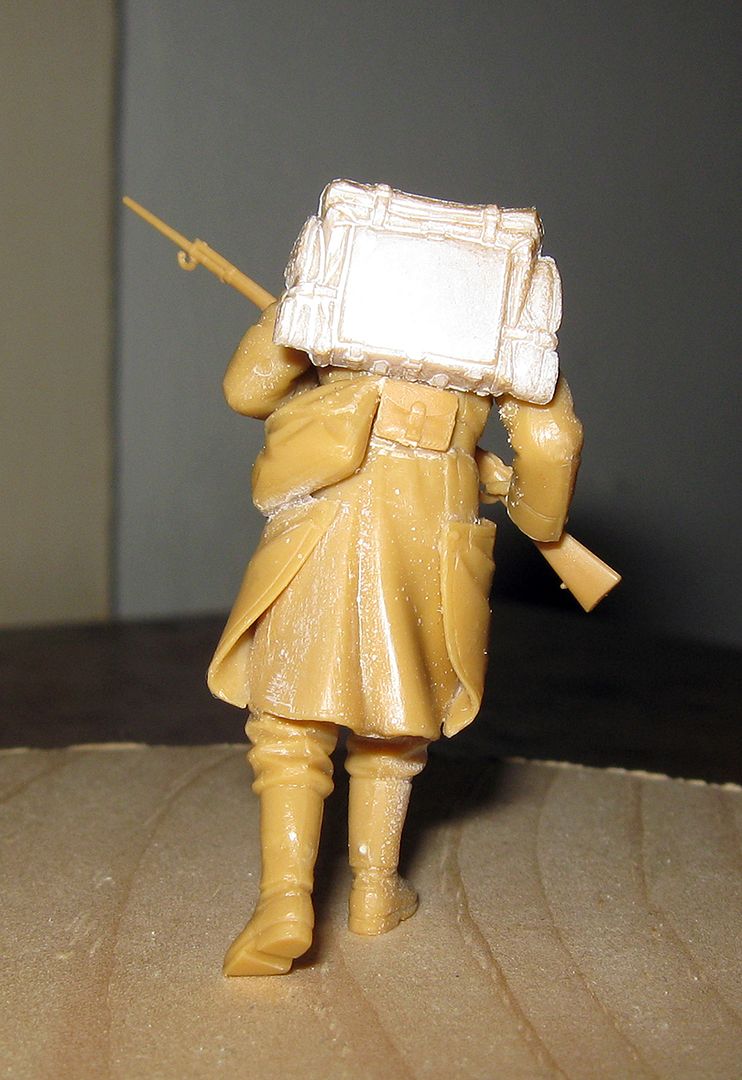
Here are the two figures assembled; rifles are not final, merely in place to illustrate positions, different pieces will be used).
The basic problem with these figures is the coat skirts. A double-breasted greatcoat was worn, and the skirts were brought back and buttoned to the rear of the coat a bit below the belt, getting them out of the way of the legs. The coat fastens to the right, so the left skirt rides over the right skirt, and its 'fold' comes to the belt well to the right of the buckle. When men were standing still, and the coat at fresh inspection standard, this doubled portion tended to bell out a good bit, but when the thing had been worn a bit and the man was in motion, things were different. The kit parts would provide a belling out of nearly half a foot in scale, which is not appropriate for the sort of poses the figures are in. The relevant portions of the greatcoat's skirting comes in three parts (front left, front right, and a small center piece), and they are so consutructed that test fitting of the unit really is not possible --- you have to glue them to see what you have got. And this will be wide belling, and centers that do not happily align anywhere near where they ought to with the belt.
On the first of these I did, the soldier with rifle leveled, I cut broad 'vees' into the skirting and pressed these together, removing much of the belling. I then had to build up a bit on the top edge of the skirting, particularly on the center piece, which I did with half millimeter sheet. A good deal of CA gel was employed for filler and minor sculpting. The second one, the man with the rifle a'slant before his body, I piled into after the first was complete in an 'if I'd known then what I know now' spirit, and it went together much more quickly and easily. On this one, I simply fitted the left and right front pieces so there was little belling to start, and constructed my own center piece to fit, from two bits of custom trimmed half millimeter sheet. This proved much easier to bring off.
The second problem is accoutrements. Things like cartridge cases, haversacks, etc. are separate pieces. This has its points as a method, but the things are not molded in ways that accommodate their attachment to a body. I thinned cartridge cases down a bit, put a bit of hollow into their interior faces, and scraped some recess into the figure to receive them. The haversacks on the left hip, if treated as the kit would have you do, would ride ride out on the belling of the skirts as if that were so much sheet steel, which is simply ridiculous. I cut away portions of the skirting there to accommodate the haversacks.
There are some problems with the arms, and if I had done only the first figure I would be especially critical of their fit. The cuffs have no opening; the hands stick out from a flat solid surface. They have to be opened up. On the first one, the man with leveled rifle, I opened the cuffs before dressing the sprue attachment, and went on to other things. When I got back to them, I mistook a small tab on the top of the shoulder for excess to be trimmed off. On the second figure, I noticed that this is part of a two-lobed shoulder tab which is part of the uniform, and serves as decent locating indicator, when matched to a similar tab on the shoulder of the torso piece. Without this piece for indicator, I had a devil of a time getting the arms on the first figure. I suspect I would have in any case, because I am pretty sure I did find the 'proper' mating of the surfaces, and it did not work; the angle of the rifle in the hands was very off, and the rifle would not clear the cartridge case on the right front. I wound up sawing a good crease in the crook of the right elbow, to the outside, and bent it so the forearm was both wider from the body, and bent a little more sharply at the elbow. The left arm I fitted to the figure so it gripped the rifle well, which left a sizeable gap to fill with CA gel (a good deal of this was required on the right arm to shoulder joint, too). The arms on the second figure, though, went on quite nicely, and accommodated the rifle well without much fuss. I replaced the tab I cut away on the first figure with a bit of square rod.
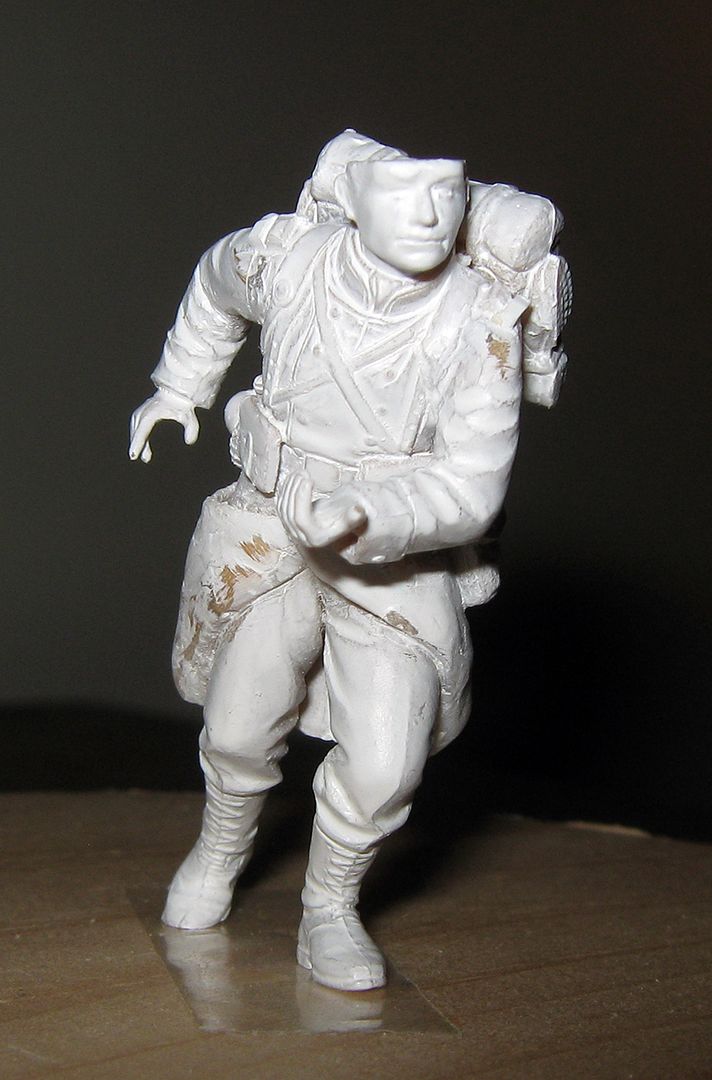
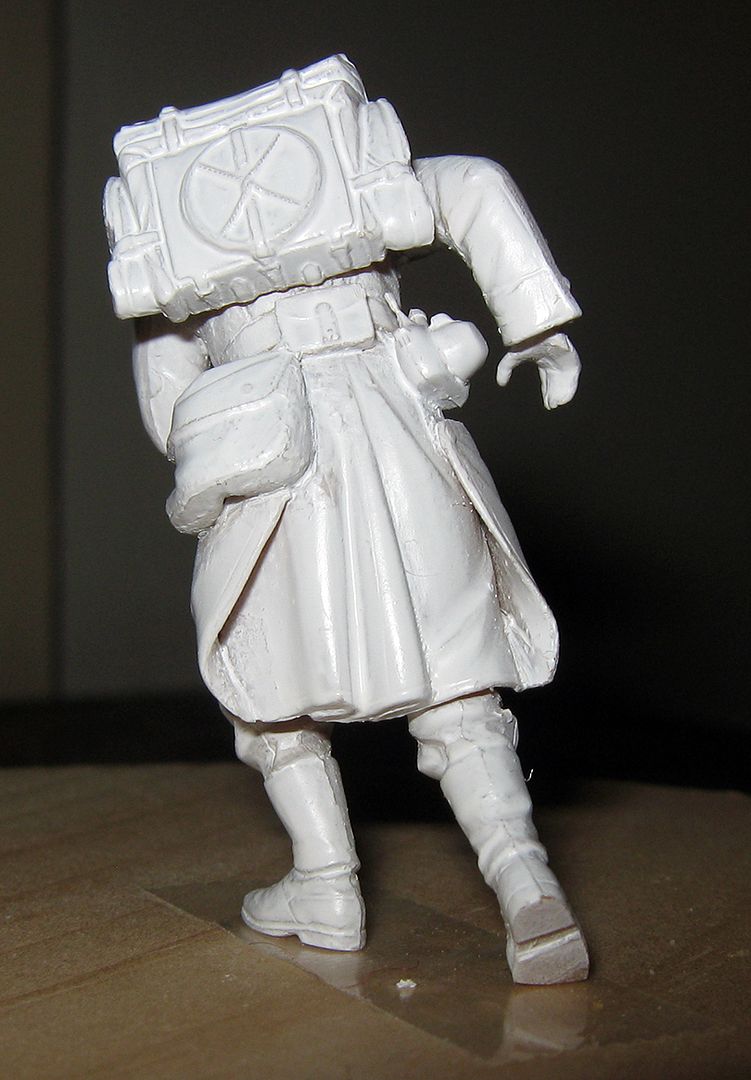

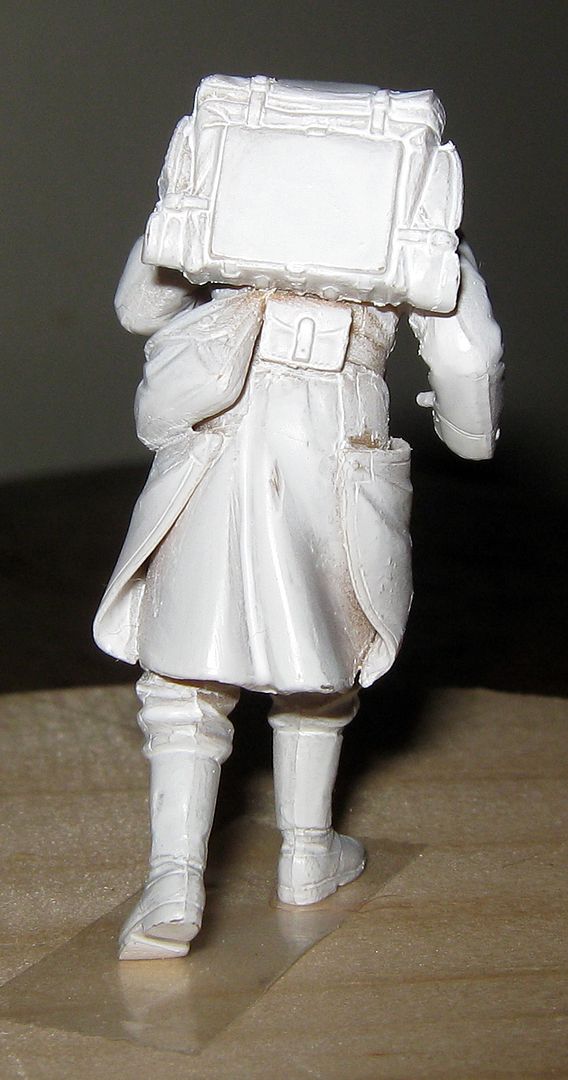
Here are the figures under primer, ready to begin painting.
On the off chance that a painting technique would work, I kept pretty close track of what I did from here on. In looking up information on how to paint flesh tones, I came upon a technique called
Verdaccio, also known as 'dead coloring', in which flesh areas are first painted a grey-green, after which the flesh tones are added. As this tone is dead opposite to the colors commonly employed for flesh, it gives some depth and shading almost automatically when the flesh tones are applied over it. Some experiment showed it did indeed give decent results. It occurred to me the same principle, if applied to other colors, might give good results, so I prepared the figures in a sort of 'color negative' by applying washes of opposite color over the primer, which concentrate in the recesses: orange where blue will go, dark green where red will go, blue where tan will go. And, of course, the 'dead color' grey-green on the face and hands (with the eyes scraped clean of the wash with a toothpick point). I think the technique worked well enough to persevere with, though it seems better suited to light colors than to dark ones.
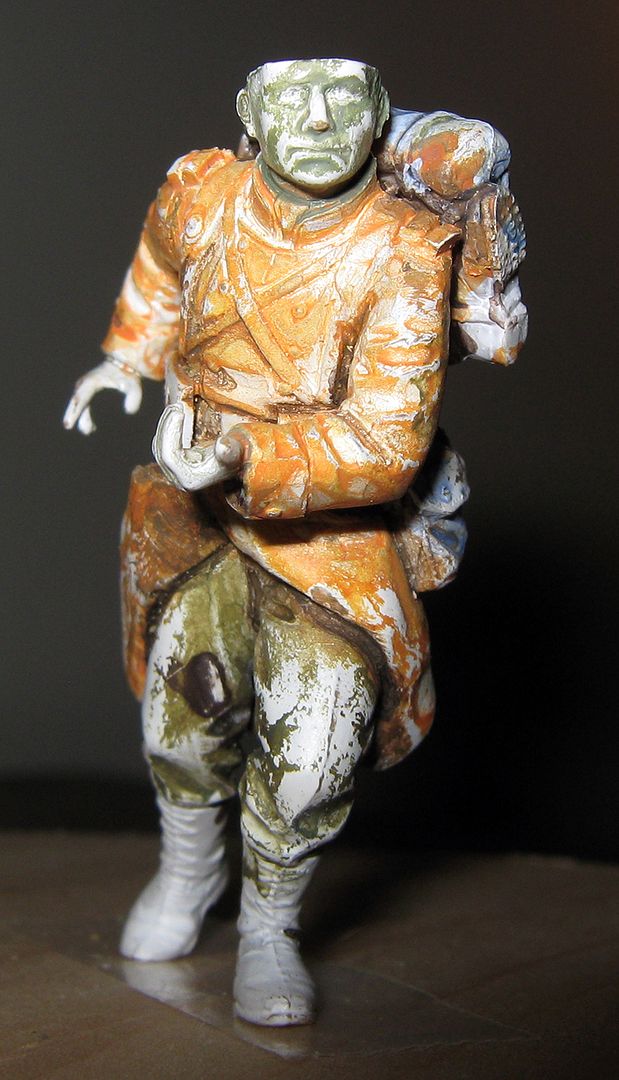
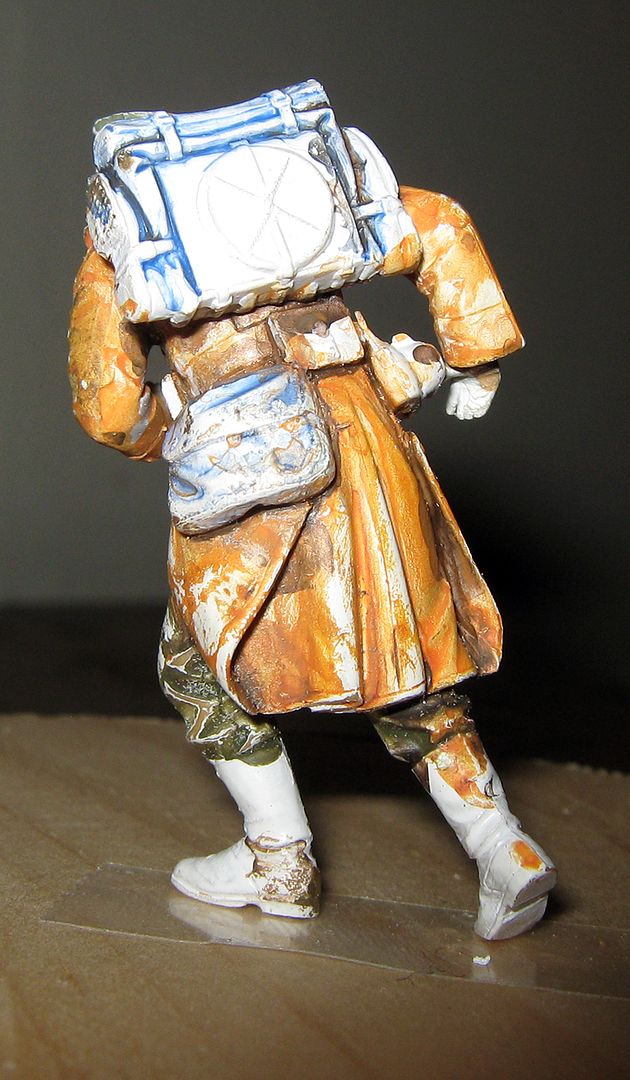
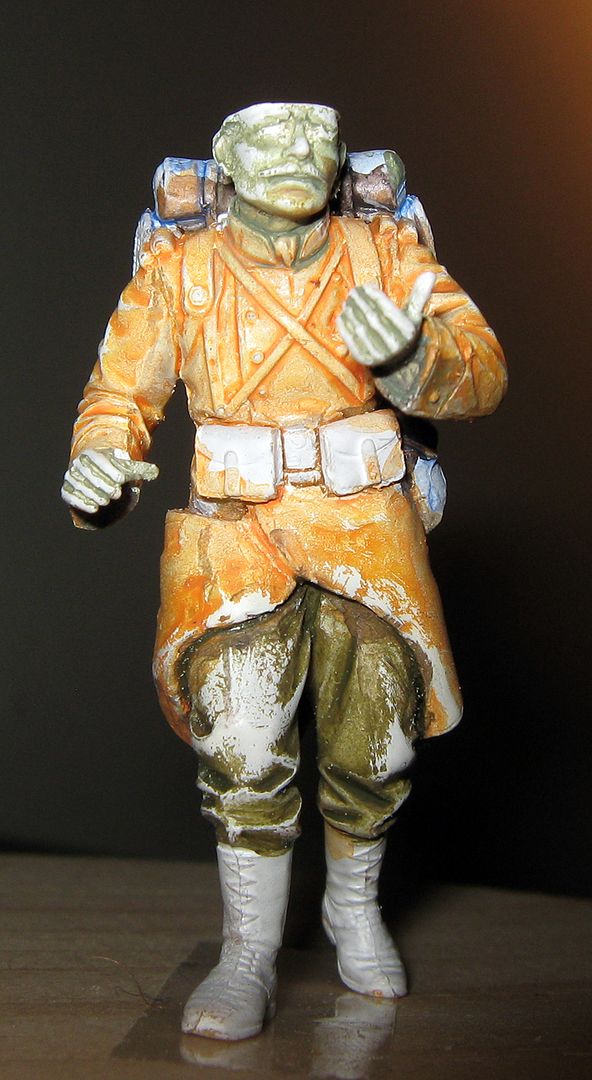
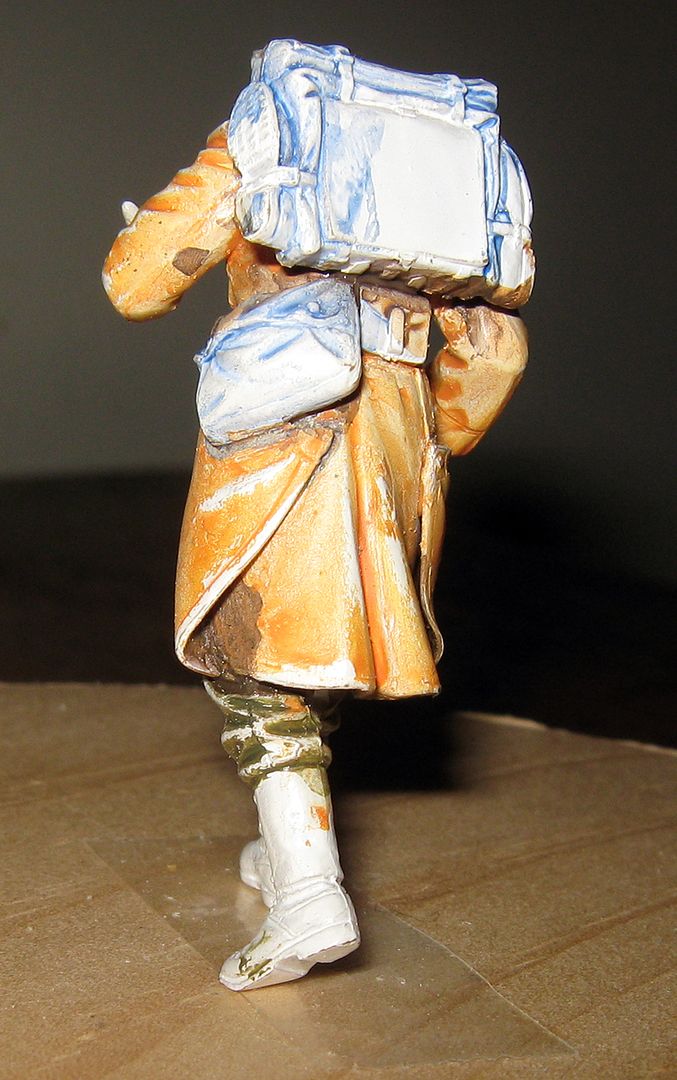
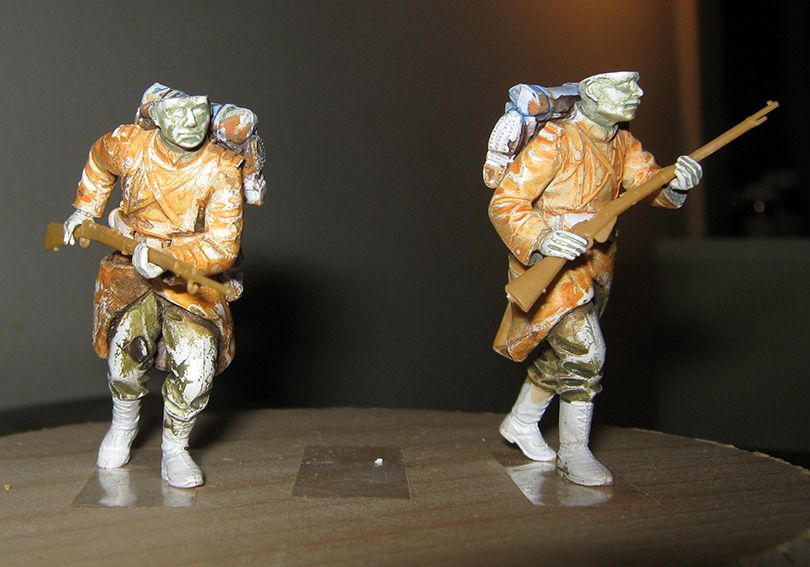
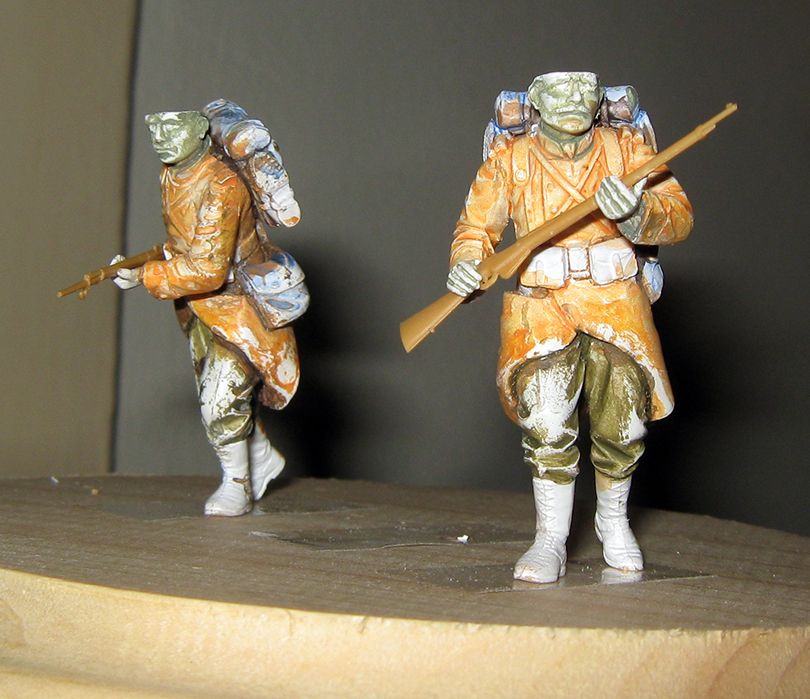
(I expect I will be doing both on one base when completed)
Here are the figures in their 'color negative' undercoat (a bit of burnt sienna was run into places on the coat that wold be particularly dark).
I began by doing the coats, the largest part of the figures. I am using artist's tube acrylics, thinned with water. The basic color here is ultramarine blue with some black and a bit of white added. Here are the figures with just a coat of the basic color applied:
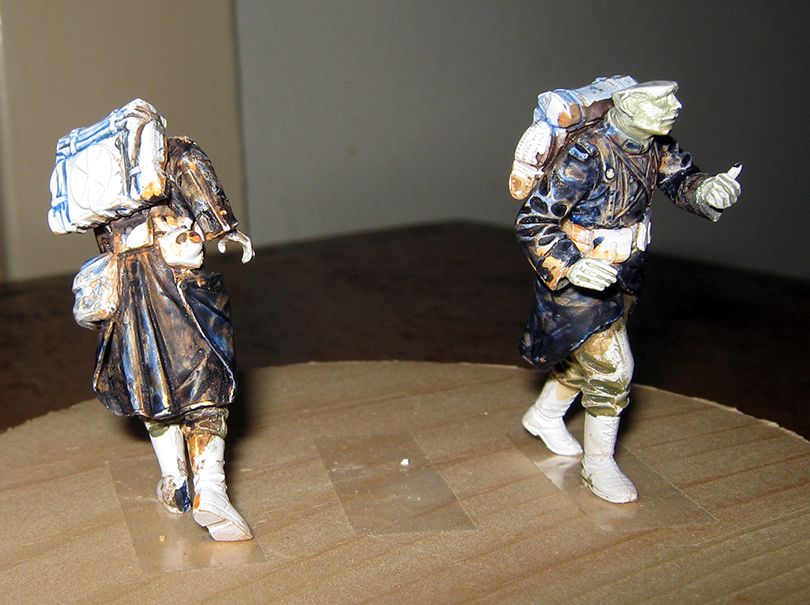
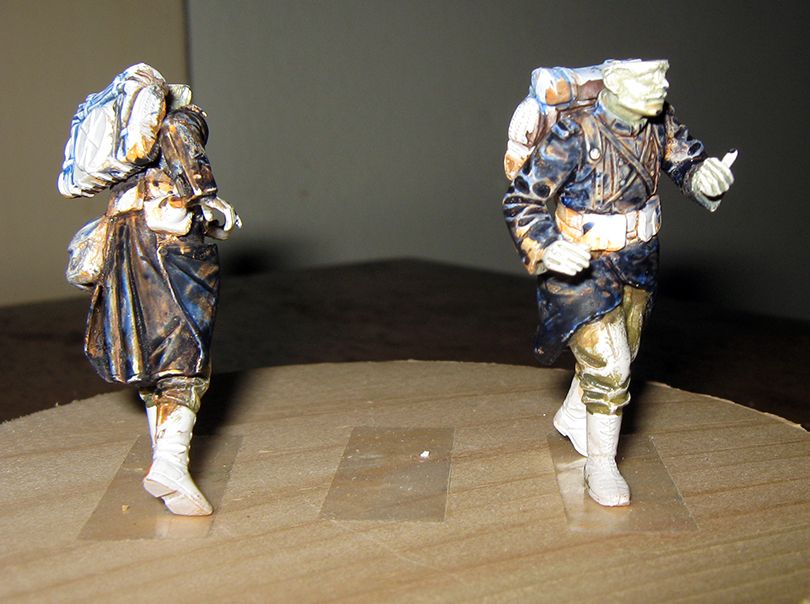
While this did give some deep shadow, I thought it needed more in many places, so here are the figures with some shadow (ultramarine plus black) put in:
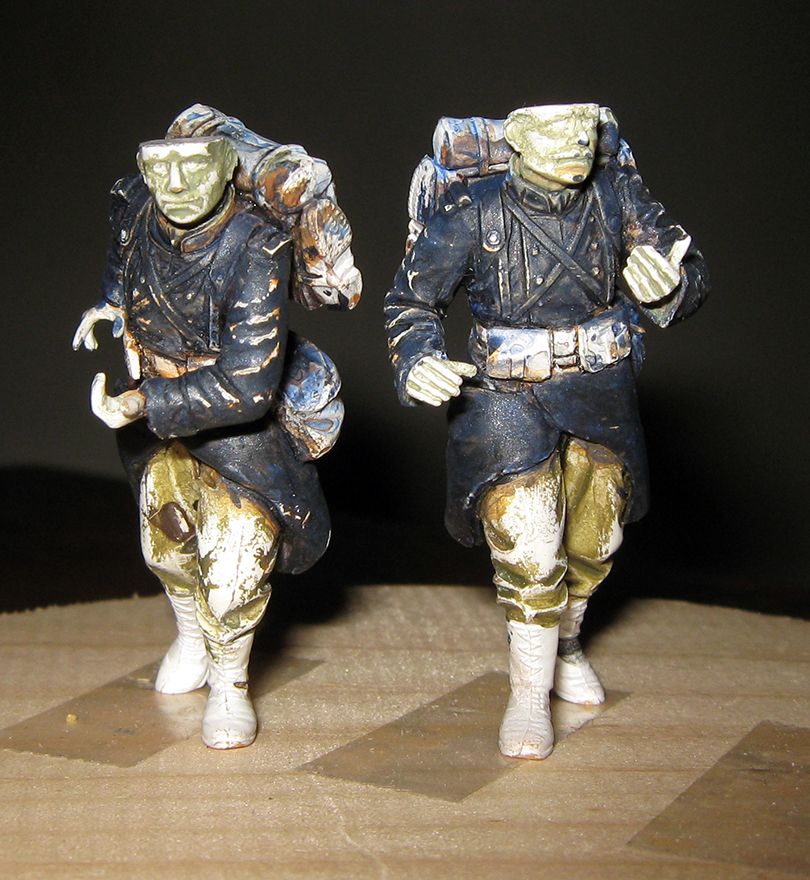
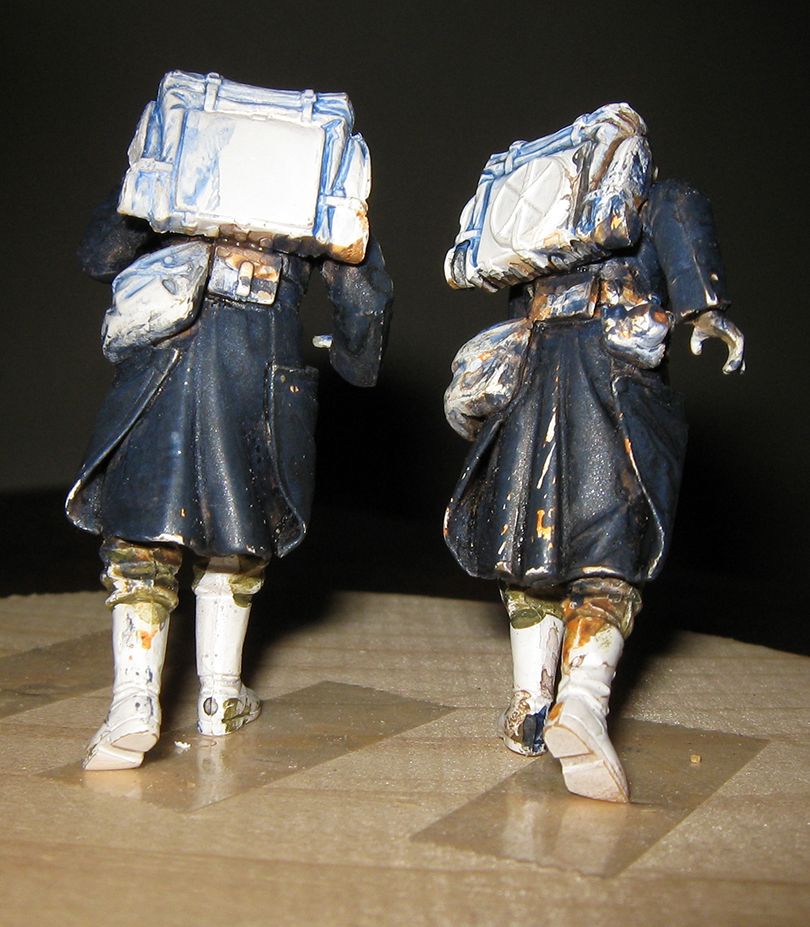
Here are the figures with highlights put in (straight ultramarine):

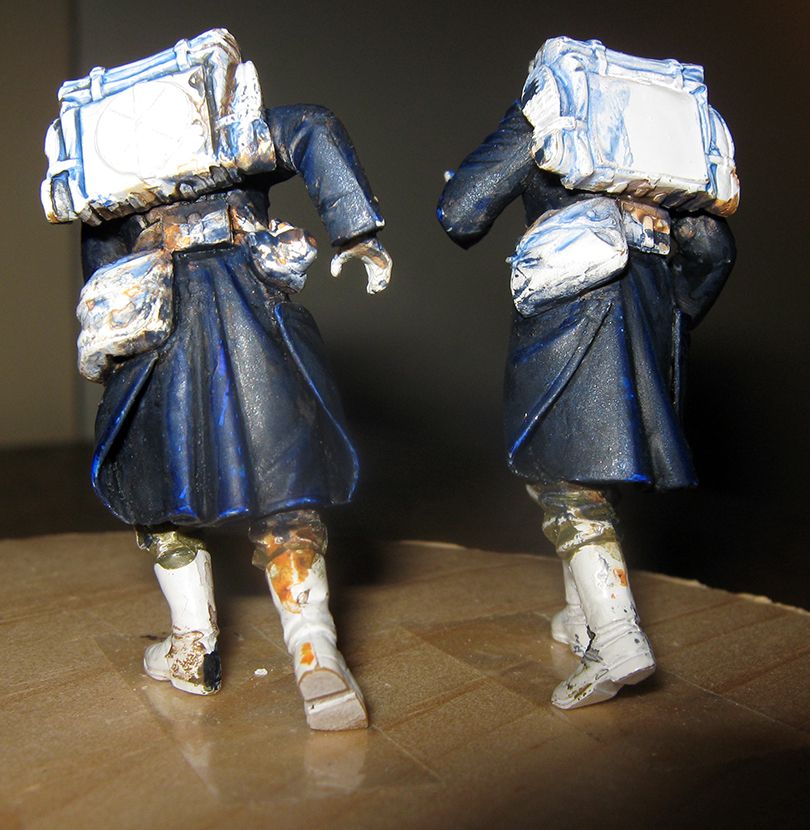
(somehow, the lens got a bit smudged, but this was not noticed till wife processed the pictures, and more paint was on by then...)
Here are the figures with all other basic colors put in:
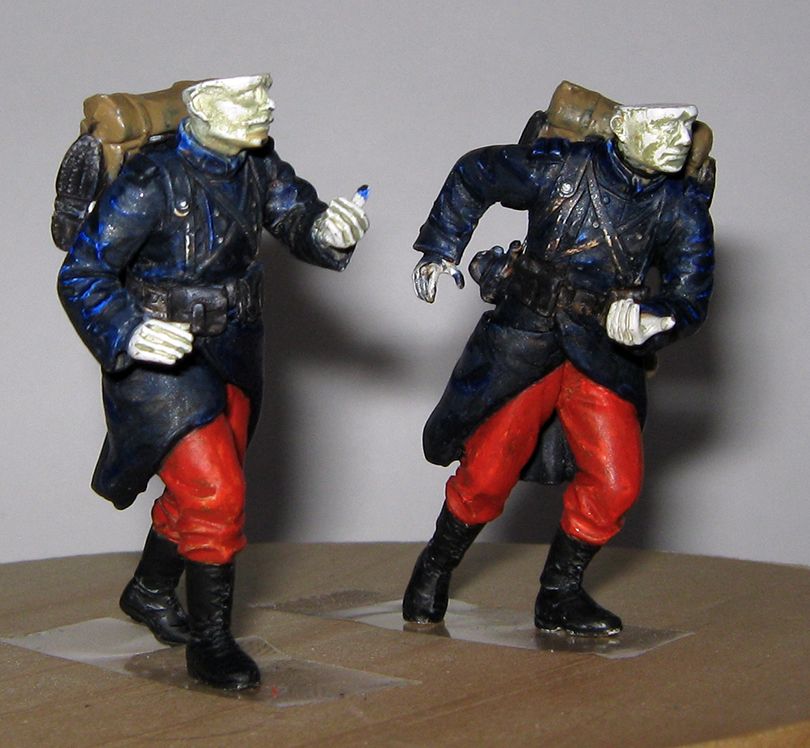
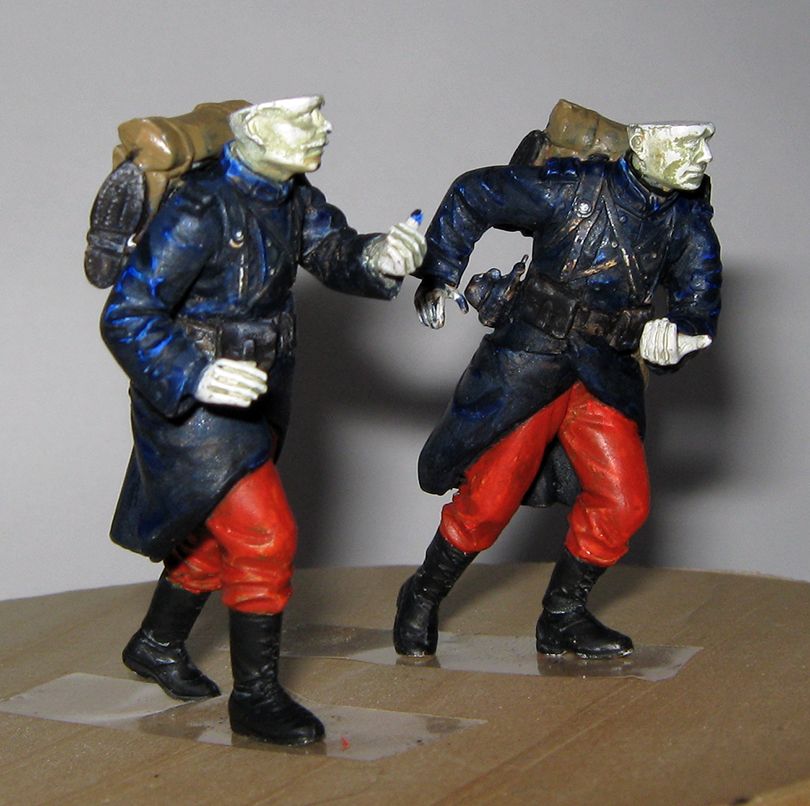
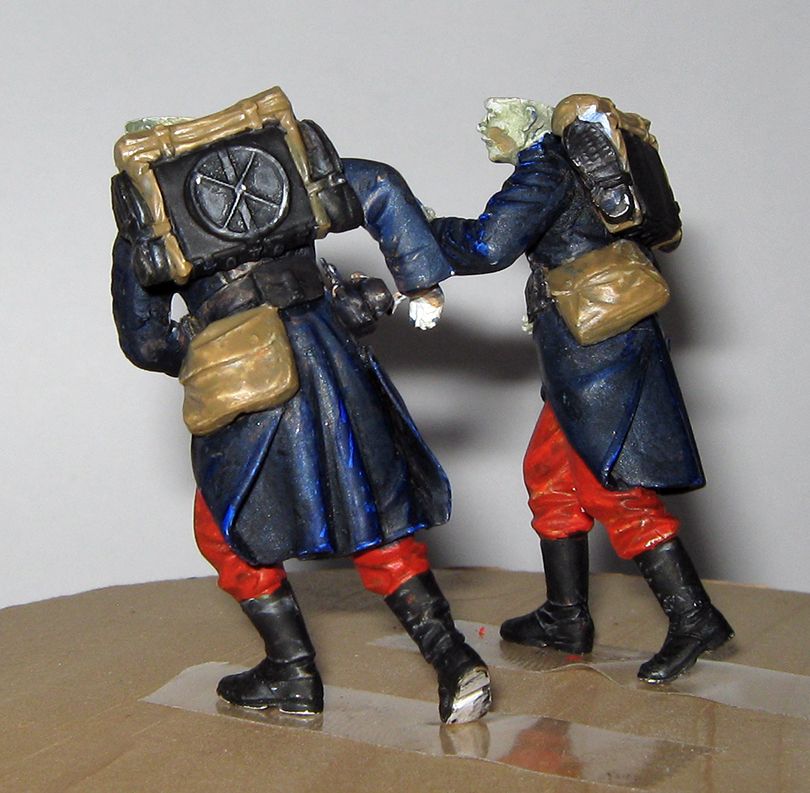
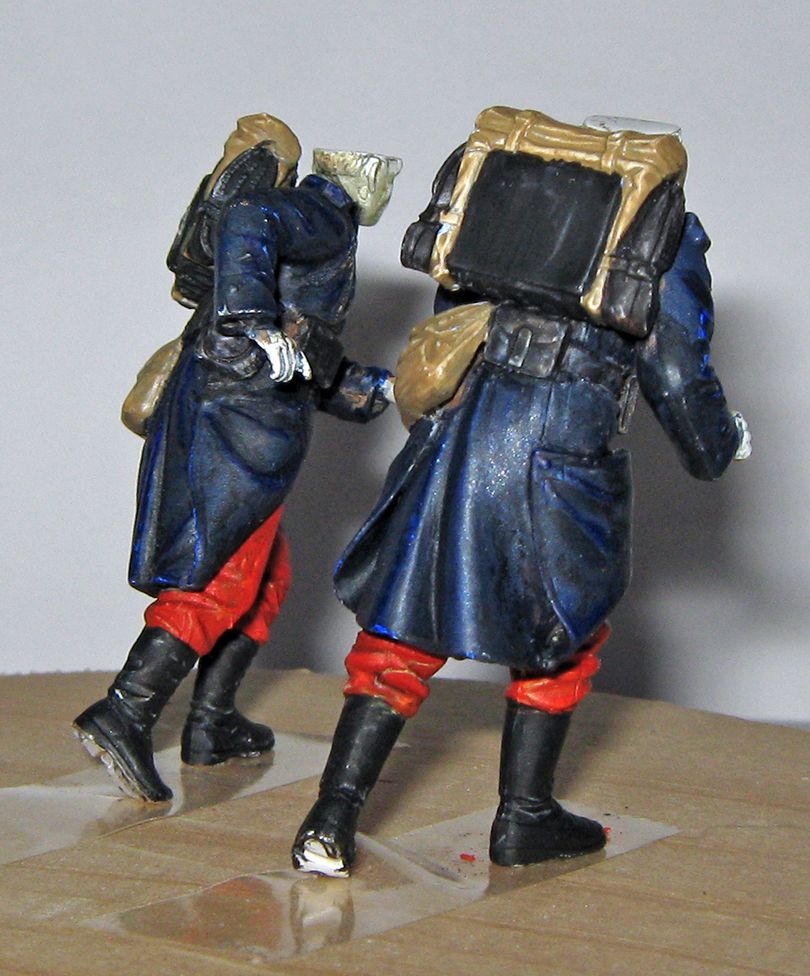 Les pantalon rouge
Les pantalon rouge are done with cadmium red mixed with a little burnt sienna. The undercoating worked very well here, what you see is a single thin coat of the basic color. The haversacks and blankets are a PollyScale deck tan cut with a little ultramarine, the black is a Model Master black also cut with a little blue. This will let me use straight black for darkest areas, and most of the black surfaces will be tube acrylic Mars Black, which has a reddish cast. The undercoating worked well on the tan areas also --- I expect the technique is most useful when the opposite color is darker than the color to be applied.
What is on now is only the basic coloring; there will be blending coats and considerable touchings up, and the various belts and straps have to be done, along with some detail painting. But this is pretty much what things will look like.
Next is the faces, and please, wish me luck on the eyes....